Stephen Hayes's Blog, page 44
November 14, 2015
Christians on Twitter: scrambled brains
I saw that “Christians” was trending on Twitter, for the first time that I remember, so I thought I’d have a look to see what the fuss was about. Here are the first bunch of Tweets I found.
I don’t know about anyone else, but I find them an almost incomprehensible incoherent and disjointed mess.
Whether for or against, most of the tweeters have very little idea of what Christianity is about.
Whatever else it means, that indicates to me that Christians have done a pretty poor job of communicating their faith.
And it’s not only Twitter. I read Usenet newsgroups, and there are several Christian ones, in name at least. But the only people posting regularly there are cranks and fanatics, plugging their own weirdly distorted views. They are probably drive-by spammers — they rarely look to see if anyone has replied to their junk, and never stop to answer questions. They don’t even look to see if their stuff has posted correctly; one of them has misspelled some of the names of newsgroups he has posted to, but never looks to see, which saves members of the misspelled newsgroups the trouble of deleting his posts
We really need some Christians who will post stuff on the internet that looks like something other than scrambled brains.
DJ Static @BeImpressive2U 4m4 minutes agoIn terms of violence and having blood on their hands, white Christians are so far ahead of the rest of us it’ll take cheat codes to catch up
2:22 PM – 14 Nov 2015
· Details
” data-component-context=”tweet” data-you-follow=”false” data-follows-you=”false” data-you-block=”false”>
Somto okeke
@Somtookeke4 4m4 minutes ago
#SpeakersDen:#world_diabetes_day:#diabetes awareness month,#November14th: http://speakersden2.blogspot.com/2015/11/world-diabetes-day-diabetes-awareness.html …#Christians
Ron Kollman
@RonKollman 4m4 minutes ago
2:22 PM – 14 Nov 2015
· Details
” data-component-context=”tweet” data-you-follow=”false” data-follows-you=”false” data-you-block=”false”>
2:22 PM – 14 Nov 2015
· Details
” data-mentions=”realDonaldTrump jaketapper” data-component-context=”tweet” data-you-follow=”false” data-follows-you=”false” data-you-block=”false”>Christians unwittingly allowed Satanists to ambush Missouri’s anti-abortion laws – http://sacredcombat.com/index.php/2015/11/14/christians-unwittingly-allowed-satanists-to-ambush-missouris-anti-abortion-laws/ … – Sacred Combat
2:22 PM – 14 Nov 2015
· Details
” data-component-context=”tweet” data-you-follow=”false” data-follows-you=”false” data-you-block=”false”>
PJ
@pnjeffrey 4m4 minutes ago
@realDonaldTrump@jaketapper Christians, women and middle American want Hilary as 45 Presidet. Hilary is our only HOPE
Melanie
@LoveSunAndYarn 4m4 minutes agoMelanie Retweeted Pat Peters, Ph.D.
They do include Christians. The world has seen the proof. Isis admits it. Kerry can’t legislate the truth away.
Melanie added,
Pat Peters, Ph.D. @PatVPeters
ISIS Genocide Victims Do Not Include Christians, the State Department Is Poised to Rule http://news360.com/article/322036957 …
2:22 PM – 14 Nov 2015
· Details
” data-component-context=”tweet” data-you-follow=”false” data-follows-you=”false” data-you-block=”false”>
Serendipity
@Allephemeral 4m4 minutes agoSerendipity Retweeted Feisty☀️Floridian
DEMOCRATS WAR ON CHRISTIANS! Clinton wants OPEN BORDERS & 200,000 Muslim refugees HERE TRUMP WILL CLOSE OUR BORDERS
Serendipity added,
Feisty☀️Floridian @peddoc63
Wow
November 10, 2015
Mission and migrancy
Today I had a visit from three priests, and we had an interesting discussion on mission and migrancy.
Fr Ciprian Burlacioiu is a Romanian priest based in Munich in Germany, and is doing research into mission and migrancy. He has recently completed a monograph on the African Orthodox Church in South Africa, and his current research project grows out of that.
Fr Diliza Valisa and Fr Mthuthuzeli Thompson are priests in the Ethiopian Orthodox Church. Fr Diliza is writing a history of the Ethiopian Orthodox Church in South Africa, and I am editing it for him to help him get it ready for publication.
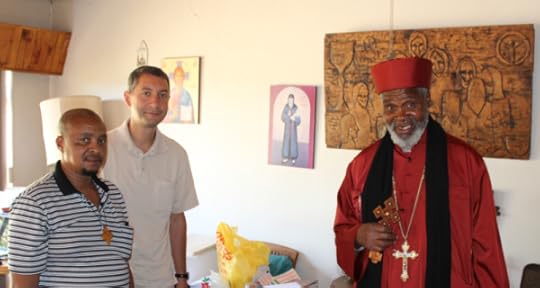
Mthuthuzeli Thompson, Ciprian Burlacioiu, Diliza Valisa
Cipian himself is in a situation of migrant ministry — his parish in Munich caters mainly for migrant workers from Romania, who are there to make money and possibly go home, so the church is not the highest priority in their lives.
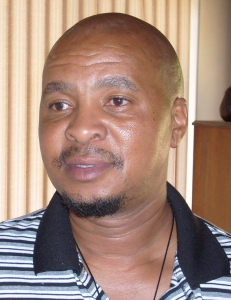
Mthuthuzeli Thompson
Mthuthuzeli Thompson is in a similar position. The bulk of the congregation are migrants from Ethiopia. They have their Sunday services at 6:00 am, and it’s all over by 8:30. Most of the congregation are businessmen, and they have to be at work by 9:00. The South Africans complain that the services are too early. By the time they wake up on a Sunday morning the service is over.
Fr Diliza Valisa commented on the fissiparousness of South African Christianity. No one knows exactly how many different Christian denominations there are in South Africa, but there are well over 10 000.The Ethiopian Church in South Africa sprang from the Ethiopian Church founded by Mangena Mokone in Marabastad, Pretoria, in 1892. It was a breakaway from the Wesleyan Methodist Church. It united briefly with the African Methodist Episcopal Church of the USA, and then a substantial fraction under James Mata Dwane joined linked to the Anglican Church as the Order of Ethiopia, and it continued like that for 70 years, when it weas decided that the Order of Ethiopia should have its own bishop. Unfortunately they could not agree who should be elected, so the choice fell to the Anglican Synod of Bishops, who chose the Revd Sigqibo Dwane, the grandson of the founder. He was not a popular choice, however, because he had not grown up within the Order of Ethiopia himself, and so there were numerous splits. One group, under the Revd Ephraim Hopa, who had been the Provincial of the Order, made contact with the Church of Ethiopia, and united with it, so completing Mangena Mokone’s vision of 90 years before, of an indigenous African Church that was older than most of the European churches that had sent missionaries to Africa. But even then there were splits, as people wanted to be leaders on their own account, and that in turn led us to a discussion of married bishops.
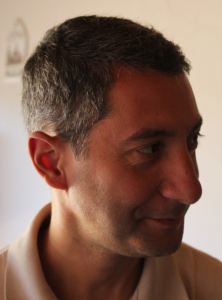
Fr Ciprian Burlacioiu
Many of the clergy who left the Ethiopian Orthodox Church did so because they wanted to be bishops, and as bishops in the Orthodox churches have to be monks, and therefore unmarried, they saw no future for themselves and left to start their own denominations. Mthuthuzeli Thompson said that in part that was a cultural thing. In Xhosa culture, in particular, an unmarried man is still a child, and his opinion does not count. The idea of an unmarried man being a church l;eader therefore does not fit, and people find it difficult to respect an unmarried bishop.
Fr Ciprian Burlacioiu said that his original research into the African Orthodox Church indicated that Christianity had spread in many p0arts of Africa through migrancy. Migrant workers went to the diamond mines at Kimberley (where the AOC started) mainly in order to earn money to buy guns. But in the course of working in such places they came into contact with the Christian faith in various forms, and then took it back to the places where they lived, and thus the Christian message spread though largely informal channels of migrant workers.
He is here to do more research into this, and after our discussion, he and I went to the national archives so he could follow it up, but unfortuately the power was off at the archives, and so we could not go there. That is rather sad, as he is only here for a limited time, and it seems that one of the places where he was hoping to do research may not be available.
Ciprian also commented on the recent influx of refugees from war-torn Syria into Germany. Some have said that they are economic migrants rather than refugees. Ciprian said that there are also large numbers of economic migrants in Munich — many from Greece.
On Sunday he joined us in our service at Mamelodi, and as it was the bfeast of St Michael and the Angels, he spoke a little about the angels. And even there, though the people in the congregation have lived in town all their lives, they still gregard “home” as a rural area somewhere in the region of Polokwane or Tzaneen. So migrancy persists for a long time, and the church has not really come to terms with it.

St Michael and all the Bodiless Powers of Heaven, celebrated in a house church in Mamelodi East
Anyway, we had an interesting conversation, and here I am trying to write down what I remember of it before I forget completely, like Boswell recording the converstions of Samuel Johnson. But if anyone reading this knows of any research resources that might be usefulo for Fr Ciprian’s migrancy and mission project, please let him know. You can contact him at ciprian.burlacioiu@gmail.com


November 5, 2015
Blaise and Merlin
An interesting blog post by Bishop Seraphim Sigrist on Blaise the mentor of Merlin.
These notes, revised and added to a little, began a few years ago when I saw a survey asking the reader what character in an original nonEnglish book one would choose to be, my just about first thought was Blaise in Robert de Boron’s Story of Merlin. It is written in Old French even though the characters are somehow British and of course also allowing it to be fundamentally fictional. Well this got me to thinking a bit about Blaise, who sort of came to mind out of the blue (or maybe out of some inner cloudiness of course) and here I propose to gather what material I have and find about this figure, about the Blaise of the story of Merlin, who does indeed interest me and I think perhaps may interest you as well. Blaise was, Robert de Boron(c 1200) tells us, the confessor of Merlin’s mother from before the birth of Merlin whose father it seems was an aerial spirit. (Layamon’s account) –in appearance a handsome young man but of the sort that Apuleius tells us live between the earth and the moon and indeed she never saw him again.
Source: BLAISE: seraphimsigrist
If such things interest you, it’s worth going to his blog and reading it all.
At another point he notes:
John Matthews writes “Behind the figure of Merlin, shadowy and insubstantial as a ghost stands that of his ‘master’ Blaise, portrayed sometimes as a monk or hermit, but always as older and deeper sunk in the wells of time. Few have succeeded in making contact with him. Those who do are possessed of a potential access to the entire Grail corpus… See him as a monkish figure in a brown habit, seated in a whitewashed cell poring over a beautifully illuminated tome. What does that book have to tell?”
At first I wondered if there might be a link to St Blaise, though it seems not. They might have been contemporaries or near contemporaries, if we date Arthur (and thus Merlin) to the 4th or 5th centuries, but perhaps they lived too far apart.
It reminded me of my visit to the seminary at Shen Vlash (St Blaise) in Albania some years ago. They rebuilt the church, which had been destroyed by the atheist Hoxha regime, but after the church had been consecrated they noticed that people were lighting candles some distance from the church. On enquiring about this, the local people said that that was where the original church had stood. So a chapel was built there, and people come regularly to light candles, not only Christians, but Muslims too, who also venerate St Vlash. But he appears to have no links to the Merlin one.

Church at Shen Vlash (St Blaise), Albania, rebuilt after the previous one had been destroyed during the atheist period (1967-1991). To the right is the small chapel where people come to light candles and venerate St Blaise.
As Bishop Seraphim notes, however, Blaise the mentor of Merlin was probably a fictional figure, so one can imagine all sorts of things about him, so why not a connection with Shen Vlash?
And there seems to have been more than one saint named Blaise. There was St Blaise the Bishop of Sebaste, who is probably the better known one, and St Blaise the Shepherd. Which one is venerated at Shen Vlash? Who knows whether stories about the life of one have become attached to the other, and perhaps even to the third, the mentor of Merlin? Bishop Seraphim invites us to go on an imaginative journey, and who knows where it will end? As he points out, it can even end up with a comic strip heroine, Modesty Blaise.


November 4, 2015
A children’s novel about apartheid
At the end of last year I published a children’s novel set in the apartheid period of South Africa, called Of wheels and witches.
It hasn’t attracted a vast readership; I could probably count the number of readers on the fingers of one hand, and they include my wife who read it in manuscript to tell me if she found any obvious plot holes and things like that.
So why did I write a “political” novel for children?
I’ve partly explained my reasons for writing the book here, in a review of reviews: Apartheid and racism in children’s literature | Khanya
And it’s not all political, as it’s mainly an adventure story. The difference from most children’s adventure stories is that the apartheid government is the villain of the piece. That, of course, would have made it unpublishable at the time, at least in South Africa. It is set in 1964, when the apartheid regime had been in power for 16 years, and had been tightening its grip on power by passing more repressive legislation every year.
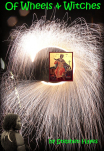 The children in the story range in age from 9-12, three white and one black. The white children are largely unaware of the political set-up in which they lived, as were most white children at that time. That was part of “white privilege” — if you were white, you could be quite unaware of the situation until it impinged directly on you.
The children in the story range in age from 9-12, three white and one black. The white children are largely unaware of the political set-up in which they lived, as were most white children at that time. That was part of “white privilege” — if you were white, you could be quite unaware of the situation until it impinged directly on you.
The story also has a variety of other elements, some verging on fantasy — witchcraft, ikons and hints of a spiritual world lurking behind the outward appearances of things.
If you’d like to know more about how I came to write it, go here: Apartheid and racism in children’s literature | Khanya
If you’d like to buy it (as a Christmas present for your godchildren, perhaps), go here: Smashwords – Of Wheels and Witches – a book by Stephen Hayes
If you’d like to review it, or read other people’s reviews of it, go here: Goodreads | Of Wheels and Witches by Stephen Hayes — Reviews, Discussion, Bookclubs, Lists


November 3, 2015
A Cosmic Find in The Screwtape Letters
A fascinating piece of literary detective work.
 Originally posted on A Pilgrim in Narnia:
Originally posted on A Pilgrim in Narnia:
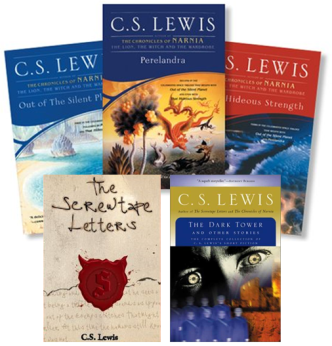 I am excited to share this intriguing research breakthrough with all my Pilgrim in Narnia readers.[1] As many of you know, I have been working on C.S. Lewis’ The Screwtape Letters for a few years now. It is time to invite you all into some of the things I have discovered.
I am excited to share this intriguing research breakthrough with all my Pilgrim in Narnia readers.[1] As many of you know, I have been working on C.S. Lewis’ The Screwtape Letters for a few years now. It is time to invite you all into some of the things I have discovered.
After presenting a paper on teaching Screwtape in 2012, I traveled to the Marion E. Wade Center at Wheaton College near Chicago. I was working on background material for my PhD thesis and was excited to make this pilgrimage.
Honestly, it wasn’t going very well. I had gone to look at the marginalia in Lewis’ Bibles—to see if his notes and highlights could tell us anything about his Bible reading habits. All I really found was that the things Lewis underlined or marked seemed to be beautiful passages. Beyond that, I found very little.
After a day and a…
View original 2,265 more words


November 2, 2015
A temple for Soshanguve?
The Orthodox congregation of St Seraphim in Soshanguve has been meeting in houses and school classrooms for the 18 years of its existence, and we have been looking for a place to build a church for most of that time.
Twelve years ago we applied to |Tshwane municipality for a church site in Block G, which is near to where most of the people lived then, The City of Tshwane was still new, having been formed from 13 smaller local authorities, each with its own policies for allocating church sites, and so the city authorities were trying to develop a unified policy and to find out what land had actually been allocated for such purposes. We hit a snag — it seemed that the vacant land in Soshanguve was registered in the name of Gauteng Province, and not in the name of the City of Tshwane, and so though the municipality was quite happy to let us have the land, it wasn’t theirs to give, and would have to wait to the land was transferred to the city. Twelve years later, we are still waiting.
More recently Reader Simon Shabangu, who has been caring for the Soshanguve parish since Fr Athanasius Akunda left to return to Kenya, has been looking for land that was not encumbered by belonging to the province, and has now at last been offered a site, Erf 8140 in Soshanguve South, Extension 3. He has received a definite written offer from the municipality, and today we went with Archbishop Damaskinos to look at both pieces of land.
[image error]
Extension 3, Soshanguve South, where Erf 8140 has been offered by the municipaliy. The land is about 300m down the road in the picture
Erf 8140 is about 3000 square metres, south of the road, with a stream on the east side. It has plenty of room for a temple and perhaps some classrooms, and a house for a priest.

Erf 8140, Soshanguve Ext 3.
We went to Soahanguve North, Block G, about 10 km away, to look at the land we had applied for 12 years ago. It is about half the size of the land in Soshanguve South, about 1400 square metres.

Erf G1152 Soshanguve, with Deacon Stephen Hayes, Val Hayes, Simon Shabangu and Archbishop Damaskinos
So we hope that someday, before we die, we may at last have a place to meet.


October 31, 2015
Carmen Bugan: Secret Police Records and The Language of Memory – Nieman Storyboard
Here’s an account of a writer’s reaction to reading her secret police files. I suppose I can say “been there, done that“, as can many others, but I never tried to analyse the experience like this.
Reading my personal “biography” in the secret-police speak of the files sends me back to a self I both recognize and don’t, creating another place of writing, which I could not have imagined before. I am caught in the conflict between the free, fluid language of memory and the shackled, impersonal language of surveillance reports. The Securitate portrayal of my youth writes over my memories and into my memory gaps, turning me into a palimpsest that combines the public voice of documents with my private experience. The “official” narrative in the records illuminates at times the past with details I had forgotten (it does not represent my own memories) and at times obfuscates the truth, or outright fictionalizes major events in my life, using a language that seems factual. In this sense it complicates the process of creating literary work out of personal testimony/history.
Source: Carmen Bugan: Secret Police Records and The Language of Memory – Nieman Storyboard
What struck me most about that was that it was such a different way of looking at it.
In reading my SB files I never thought in terms of it making me a palimpsest. Is that just because I’m unimaginative, or is it a personality thing? Is it because I’m an INTP type, and tend to be more objective and analytical about such things, at least according to this description ACT Now Team Development: MBTI Personality Types: INTP, The Analyst:
You tend to be highly logical, analytical, and objective, and approach everything with detached scepticism, seeking to form opinions and standards based on the information available. You will then rigorously apply these standards.
So when I saw my SB file my first thought was not to wonder what it said about me, but rather what it said about the SB. It was an opportunity to analyse the “total onslaught” mentality, and see what made them tick. Of course being under surveillance did affect me, and I’m sure many other people. It made me suspicious, for one thing. Could this or that person one knew be an SB spy? So it tended to undermine trust in friendship.
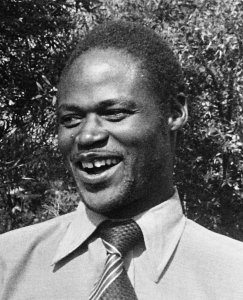
Alfredo Tembe, one of our SB spies
If course the SB files that we got hold of did not name the spies. Perhaps the Romanian ones were more explicit, but ours just referred to “a sensitive source” (‘n delikate bron). But of course reading the context makes it possible to get a better idea of whether the people were actually spies or not. But then again, there was nothing in my files that clearly emanated from one guy that I knew was a spy, because he had confessed to being one.
So now I will be reading Carmen Bugan’s story again, and perhaps it will lead me to see things in my own story that I had not seen there before.


October 19, 2015
The Church and violence
Is it just me, or are Christian responses to violence getting more and more inconsistent as time goes by?

A bishop blessing missiles to be used in Syria
PHOTO: An Orthodox priest blesses Russian missiles for airstrikes in Syria | Business Insider India:
In the above photo, an Orthodox priest blesses Russian missiles intended for airstrikes against Syrian rebels. According to Reuters reporter Noah Browning, the priest is sprinkling holy water on the missile before it is put aboard a Russian plane.
The blessing of missiles comes after Patriarch Kirill, the Primate of the Russian Orthodox Church, declared that Russia’s intervention in Syria, which is aimed at the rebels currently aligned against Syrian
President Bashar al-Assad, is a “holy battle.”
The picture actually shows a bishop doing the blessing, not a priest, though that, if anything, makes it worse. And then, in other news, there is this picture of Methodist, Episcopalian and other clergy blessing an aborti0n clinic:

Methodist, Episcopalian and other clergy blessing an abortion clinic. From left to right: Rev. Dr. Shawnthea Monroe, Rev. Laura Young, Rev. Tracey Lind, Rabbi Allison Vann, Rev. Dr. Susan K. Smith
Clergy Members Say ‘Thank God For Abortion Providers’ In Ohio:
The Religious Coalition for Reproductive Choice (RCRC), a pro-abortion rights coalition of leaders from different faiths, gathered at and blessed the Preterm abortion clinic, which has operated in Cleveland since 1974, last Thursday as part of its mission to show women that some religious people do support a woman’s right to choose, despite how vocal the opposition from wings of more conservative faiths is.
Perhaps one can justify these activities by saying that the blessings are to ensure that there is no collateral damage — only the bad guys will be hit by the missiles, and only the bad babies will get aborted.
But Metropolitan Audi of Lebanon disagrees — Notes on Arab Orthodoxy: Met Elias Audi: Our Church Does Not Bless Wars:
… the Church absolutely does not bless those who fight others or those who harm others. The Church does not bless those who kill others because human life is the possession of the Lord and when someone kills another person, it is as though he wants to kill God. In reality, the one who is killed goes to the Lord, while the killer’s heart is unjust. The unjust is inhabited by Satan and Satan will not enter the kingdom of God. Therefore the Church also does not bless wars and does not say of them that they are holy. That is, it does not sanctify wars and does not accept such a statement. Every church must be like this if it teaches the Lord’s teaching or if it hears His words. For this reason, we Orthodox, especially in Antioch, even as we suffer, are expelled from our homes, and are reviled, we do not fight our enemies. And as we see, our people in this region are leaving and abandoning their homes and living a miserable existence and some are even departing, but they are not returning evil with evil. Therefore, let it be clear that our Orthodox Church in which we are members does not bless and does not sanctify wars and does not say of any war that it is holy. I doubt that anyone who has said such a thing has heard the words of the Lord Jesus, “Love your enemies. Bless those who persecute you. Do good to those who hate you…”
Let us rather follow St John Chrysostom:


October 16, 2015
When Christians Despise the Poor | Liz Boltz Ranfeld
… it’s too hard for me to start this blog post with the sentence that I feel should start this blog, which is this: I cried tonight when I saw this image pop up in my Facebook feed: “Don’t forget to pay your taxes this year so the government can give it to people who don’t work as hard as you.”
 The vitriol I see spewed at the poor finally got to me tonight, and here I am, sitting in my living room with tears on my cheeks because I just don’t know how to keep excusing people for these kinds of statements. It’s in my nature to see the good in people, even when they have views that conflict with mine, but how much of this am I supposed to take?I see angry, hateful images that target the poor on a daily basis. Even though I try to hide people from my Facebook feed who post offensive stuff frequently, it still pops up in unexpected places. And it’s not just Facebook. I hear stuff like this in the waiting room at the dentist, in the lobby of a hotel where I’m spending the night before a family wedding, in my classroom coming from my students, walking through the streets of my city or another, in editorials in my local newspaper, on blogs, in church services. I can hide problematic people on Facebook, but I can’t hide ideas like this from showing up in the real world.
The vitriol I see spewed at the poor finally got to me tonight, and here I am, sitting in my living room with tears on my cheeks because I just don’t know how to keep excusing people for these kinds of statements. It’s in my nature to see the good in people, even when they have views that conflict with mine, but how much of this am I supposed to take?I see angry, hateful images that target the poor on a daily basis. Even though I try to hide people from my Facebook feed who post offensive stuff frequently, it still pops up in unexpected places. And it’s not just Facebook. I hear stuff like this in the waiting room at the dentist, in the lobby of a hotel where I’m spending the night before a family wedding, in my classroom coming from my students, walking through the streets of my city or another, in editorials in my local newspaper, on blogs, in church services. I can hide problematic people on Facebook, but I can’t hide ideas like this from showing up in the real world.
Source: When Christians Despise the Poor | Liz Boltz Ranfeld
St Paul says be not conformed to this world: but be ye transformed by the renewing of your mind (Romans 12:2), but it is all too easy to be conformed to this world. because we are bombarded by the world’s values everywhere we go, as Liz Bolx Ranfeld shows in her blog post. In web sites like Facebook we find the world’s values distilled into neat little epigrams, but we have them drummed into us all the time, by advertisers, politicians, celebrities and all the rest. And it’s hard to resist. As another neat little epigram puts it, “go with the flow”.
But St Paul reminds us that as Christians we are called to go against the flow, to be countercultural, to march to a different drummer.
Since the Reagan/Thatcher years especially, this despising of the poor has been particularly strong. But when these values appear among Christians it is really a mark of apostasy, or at the very least what Russian theologians called dvoeverie — double-mindedness. To paraphrase Elijah: How long halt ye between two opinions? if the LORD be God, follow him: but if the Market, then follow him (I Kings 18:21).
Baal was the god of prosperity, of commercial success. And some Christians have contextualised their theology in a form of syncretism, to justify worshiping God and Mammon. It is called Prosperity Theology. But even if we don’t try to justify it in that manner, we are still influenced by it at every turn. One can’t escape it. Nowadays, one can say that the dominant religion of Western civilization is the Market.
Ayn Rand’s ideology of “Objectivism” has been around for a long time, and though it has its vociferous admirers, not everyone is prepared to acknowledge it openly. But since the Reagan/Thatcher years it has been widely accepted in diluted form. Its values are regarded by its devotees as axioms, needing no justification, brooking no contradiction.
But Elijah says “How long halt ye between two opinions? if the LORD be God, follow him: but if Baal, then follow him.”
And the people answered him not a word.


October 5, 2015
londinoupolis: Church as a Sacred Ground
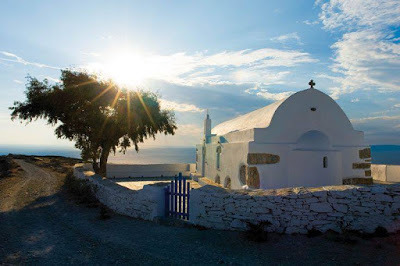 ‘When we build a church or set apart a place of worship we do something which reaches far beyond the obvious significance of the fact. The whole world which God created has become a place where men have sinned; the devil has been at work, a fight is going on constantly; there is no place on this earth which has not been soiled by blood, suffering or sin.
‘When we build a church or set apart a place of worship we do something which reaches far beyond the obvious significance of the fact. The whole world which God created has become a place where men have sinned; the devil has been at work, a fight is going on constantly; there is no place on this earth which has not been soiled by blood, suffering or sin.
Source: londinoupolis: Church as a Sacred Ground
An interesting article about holy or sacred spaces.









